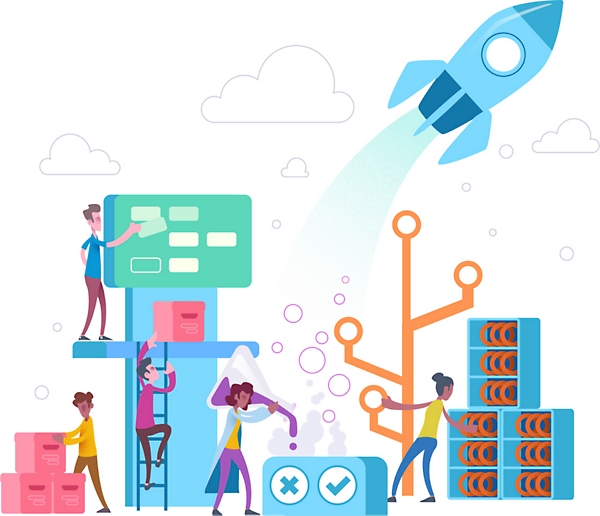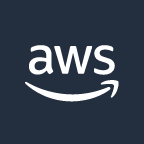Having a curated list of recommended tools is a powerful strategy for enhancing developer productivity and consistency. At some companies, this concept is referred to as the "Paved Road" (Netflix) or the "Golden Path" (Spotify).
The symbolism of the "Paved Road" in developer enablement represents a smooth, well-defined path that allows for quick and efficient travel, unlike a bumpy dirt road that slows progress and requires constant navigation decisions. It signifies a streamlined journey where developers can move swiftly and confidently, with clear directions and fewer obstacles. The Paved Road eliminates the uncertainty and challenges of figuring out the best route, providing a reliable and straightforward way to reach their destination, fostering productivity, and enabling innovation.
Here are some key benefits:
- Streamlined Onboarding: New developers can quickly become productive by following a clearly defined set of tools and practices, reducing the learning curve and time to contribute effectively.
- Consistency and Standardization: A recommended set of tools ensures that all developers follow best practices and maintain consistent workflows, leading to more reliable and maintainable codebases.
- Reduced Cognitive Load: Developers can focus on solving complex problems rather than spending time evaluating and choosing from a myriad of tools. This curated approach simplifies decision-making and allows developers to concentrate on innovation.
- Enhanced Collaboration: When everyone uses the same set of tools, it becomes easier to collaborate, share knowledge, and support each other. This common ground fosters a stronger sense of community and teamwork.
- Improved Support and Training: With a standardized toolset, it is easier to provide targeted support and training. Documentation, tutorials, and helpdesk resources can be tailored specifically to the recommended tools, ensuring developers receive the most relevant and effective assistance.
- Continuous Improvement: A curated list of tools can be regularly reviewed and updated based on feedback and industry trends. This ensures that the toolset evolves and remains aligned with the latest advancements and best practices, continuously enhancing developer productivity.
- Easier Infrastructure Maintenance: With a standardized toolset, maintaining the infrastructure becomes more straightforward, as tools and practices are well-integrated and supported.
- Simplified Large Migrations: When all teams use the same tools, large-scale migrations are more manageable. Consistent tooling reduces complexity and ensures a smoother transition during major upgrades or changes.
- Enhanced Security: Standardized tools allow for quicker and more efficient updates to address vulnerabilities. Consistently using the same tools means that security patches and updates can be applied universally and promptly.
- Efficient Updates to Libraries and Versions: Managing updates to coding libraries and software versions becomes easier when everyone uses the same set of tools. This ensures that all teams are on the latest and most secure versions, reducing compatibility issues and improving overall system stability.
- Better Resource Allocation: Standardizing on a set of tools allows the organization to allocate resources more effectively, focusing support, training, and development efforts on a smaller set of technologies.
- Clear Governance and Compliance: A curated toolset makes it easier to enforce governance policies and ensure compliance with industry standards and regulations. This helps mitigate risks and ensures that all projects adhere to the same security and quality standards.
- Enhanced Performance Monitoring: Using a consistent set of tools across the organization allows for more effective performance monitoring and optimization. This can lead to improved application performance and a better end-user experience.
- Accelerated Innovation: With standardized tools and practices, teams can focus more on innovation rather than solving configuration issues or dealing with incompatible systems. This can speed up the development cycle and bring new features and products to market faster.
- Cost Efficiency: Standardizing tools can lead to bulk purchasing agreements, reducing the overall cost of software licenses and maintenance. Additionally, streamlined training and support reduce overhead costs related to onboarding and troubleshooting.
- Predictable Development Environment: Consistent use of tools across teams creates a predictable development environment, making it easier to manage and forecast development activities and timelines.
- Easier Troubleshooting: With standardized tools, diagnosing and fixing issues becomes more straightforward. Support teams are more familiar with the tools, leading to faster resolution of problems.
- Improved Code Quality: Standardizing tools and practices helps maintain high code quality through consistent use of linters, formatters, and other code quality tools.
- Increased Developer Satisfaction: Providing a well-curated toolset reduces frustration and increases job satisfaction, as developers can focus on coding rather than dealing with tool-related issues.
- Scalability: A standardized toolset makes it easier to scale development efforts. As the organization grows, the same tools and practices can be applied to new teams and projects, ensuring consistency and efficiency.
Example: The Paved Road at Netflix
At Netflix, the "Paved Road" encompasses a set of recommended products, practices, standards, and commitments designed to guide both engineering product providers and consumers. It aims to simplify the workflow for engineering teams by providing well-integrated and supported tools, enabling them to build and operate highly available, reliable, secure, compliant, and performant solutions at scale. The Paved Road is not a mandate but rather a guiding principle that engineers are encouraged to follow by default, while carefully considering trade-offs if they choose to deviate from it. It serves as a shared set of standards and commitments that help engineers make well-informed, responsible decisions in pursuit of Netflix's mission to entertain the world. The concept also includes a clear understanding of which products are on the Paved Road, ensuring that engineers have the necessary tools and context to maximize their engineering leverage and scale.
- For Paved Road consumers, it should serve as a core collection of supported, well-integrated technologies and practices that enable them to build and operate highly available, reliable, secure, compliant, and performant solutions at scale.
- For Paved Road providers, it should serve as a set of recommended practices and commitments that allow consumers to easily discover and use products appropriately, while minimizing change and providing clarity when things do change.
Example: The Golden Path at Spotify
At Spotify, the "Golden Path" addresses fragmentation in the software ecosystem by providing an ‘opinionated and supported’ path to build something, such as a backend service, website, or data pipeline. This approach was introduced to streamline developer workflows and reduce reliance on informal knowledge sharing. The Golden Path includes step-by-step tutorials and high-quality documentation accessible through Spotify's internal developer portal, Backstage. It ensures engineers have clear guidance, reducing cognitive load and enabling them to focus on innovation and productivity.

More Examples
Many leading technology companies have implemented their own versions of curated toolsets to streamline development and enhance productivity. Here are some notable examples:
Google - Engineering Practices Documentation
Google provides a comprehensive set of engineering practices and tools to their developers, emphasizing code quality, testing, and performance. Their internal documentation, known as "Engineering Practices Documentation," serves as a guideline for best practices in coding, testing, and code review processes. This ensures consistency and high standards across all development teams.

Facebook - Developer Infrastructure and Tooling
Facebook's developer infrastructure includes tools like Buck (a build tool), Infer (a static analysis tool), and Sapienz (an automated testing tool). These tools are part of Facebook's effort to maintain high code quality and performance standards. The company also emphasizes continuous integration and deployment, supported by these internal tools.

Microsoft - Azure DevOps
Microsoft provides Azure DevOps, a set of development tools specifically designed to support the entire software development lifecycle. Azure DevOps includes features for source control, continuous integration, delivery, and project management, helping developers streamline their workflows and maintain consistent practices.

Uber - Michelangelo
Uber has developed Michelangelo, an internal machine learning platform that supports the end-to-end workflow of building, deploying, and maintaining machine learning models. This platform provides standardized tools and practices for data scientists and engineers, ensuring high-quality and scalable ML solutions.
https://www.uber.com/blog/from-predictive-to-generative-ai/
Amazon - Well-Architected Framework
Amazon Web Services (AWS) offers the Well-Architected Framework, a set of best practices for building and operating reliable, secure, efficient, and cost-effective systems in the cloud. This framework includes tools and guidelines that help developers design and maintain high-quality applications.





